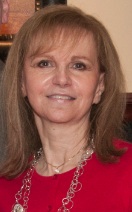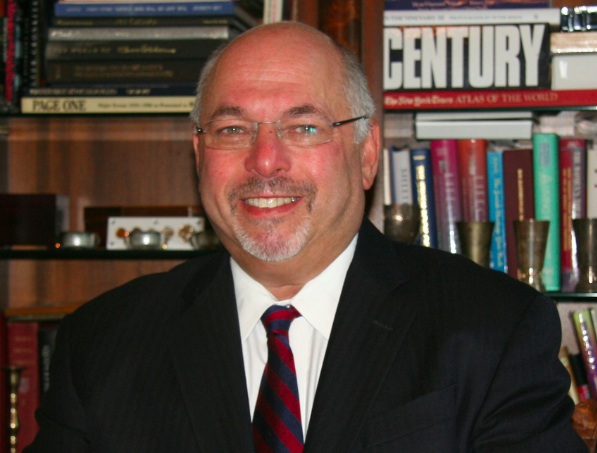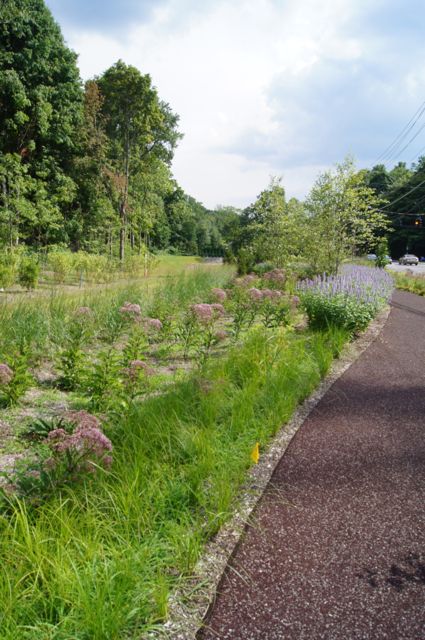Former Mayor Miriam Flisser Vies for Independence Party Votes in Tuesday Primary
- Details
- Hits: 4116
 Though all 19 voting polls will be open in Scarsdale tomorrow, September 10, 2013, there is little at stake for local voters. In fact, there will be only one name on the ballot. The seat for County Legislator to represent District 5 (Scarsdale, White Plains and Harrison) is up for grabs now that Bill Ryan, who held the seat for eight terms has decided not to run. The Democratic candidate for the seat is White Plains Councilman Benjamin Boykin and the Republican and Conservative Party endorsements were given to Scarsdale's own former Mayor Miriam Flisser. However, that contest will not be decided until the November election.
Though all 19 voting polls will be open in Scarsdale tomorrow, September 10, 2013, there is little at stake for local voters. In fact, there will be only one name on the ballot. The seat for County Legislator to represent District 5 (Scarsdale, White Plains and Harrison) is up for grabs now that Bill Ryan, who held the seat for eight terms has decided not to run. The Democratic candidate for the seat is White Plains Councilman Benjamin Boykin and the Republican and Conservative Party endorsements were given to Scarsdale's own former Mayor Miriam Flisser. However, that contest will not be decided until the November election.
The battle tomorrow involves the endorsement by the Independence Party which could be a determinant in November. Boykin was previously endorsed by the Independence Party and his name will appear on the ballot, but Dr. Flisser is hoping to take that line by waging a write-in campaign. Scarsdale's 357 voters who are registered as Independents are eligible to vote in the primary to decide whether Boykin or Flisser should appear on the ballot in November as the Independence Party candidate for the County Legislature for District 5.
Linda Killian, a Scarsdale GOP member who is working with Dr. Flissher on her campaign said, "We believe that Miriam Flisser embodies the beliefs of many independent voters in lower taxes and in no involvement by the Federal Government in local zoning laws."
All nineteen polling places will be open tomorrow, Tuesday September 6, from 6 am to 9 pm.
Letters in Support of Bob Bernstein for Greenburgh Town Supervisor
- Details
- Hits: 5529
 To the Editor: I am writing to urge all registered Democrats to vote for Bob Bernstein for Greenburgh Town Supervisor in the primary election on Tuesday, September 10th. Polls are open from 6 am to 9 pm.
To the Editor: I am writing to urge all registered Democrats to vote for Bob Bernstein for Greenburgh Town Supervisor in the primary election on Tuesday, September 10th. Polls are open from 6 am to 9 pm.
Bob Bernstein is the endorsed candidate of the Democratic Party. He is a 22-year Edgemont resident in unincorporated Greenburgh and is superbly qualified to undertake the leadership Greenburgh needs to confront the many complex issues facing our Town. He is an astute lawyer who has contributed his legal skills without compensation, together with Herb Rosenberg of Dobbs Ferry, to regain over $1.1 million for Greenburgh taxpayers, which the current supervisor was giving away illegally to a school district. He has represented Catholic nuns on Dromore Road whose home and property are threatened by a large-scale development. He will gladly accept the higher bid of $3.5 million for town property such as Frank's Nursery, and not 'give away' town assets to a lower bidder for $1.7 million, because of personal pique, as the current supervisor has done.
What more can Town residents ask for in a candidate? Today, we have dysfunction in Town government, management by personal favor, and extreme ineptness in policy development. Bob Bernstein will restore our Town to reasonable, responsible management and work with all the residents on solving their problems.
As a civic leader, I have been very distressed at the lack of response of Town government to several urgent problems in our community. Bob Bernstein will not govern by personal fiat, but through professional endeavor and relentless pursuit of what is right for our town and our taxpayers. He has integrity, resourcefulness and demonstrated ability.
Please vote for Bob Bernstein for Greenburgh Town Supervisor in the Democratic Primary on Tuesday, September 10.
Carol A. Wielk
Hartsdale, New York 10530
To the Editor:
Today I received a Feiner mailing that was directed to residents who live in Greenburgh's villages that read, in large bold-type letters, "A new challenger would TRIPLE your Town taxes." To support that claim Feiner quotes a newspaper article dated February 17, 2008. And that claim is a fraud.
It is true that in 2004 Bob Bernstein challenged the Town's allocation of park and recreation expenses to the unincorporated area budget because the Town Board permitted everyone in the town, including village residents, to use those facilities. I represented the villages in that litigation, and I know the whole story. The case was decided in the villages' favor in February 2008 and affirmed by the Court of Appeals in January 2009, and that settled the issue. After those rulings no one, and certainly not Bob Bernstein, has suggested that village residents be taxed for the Town's parks and recreation facilities. It is a non-issue.
Feiner knows this perfectly well. Yet he dares to imply that Bob Bernstein is currently trying to have village residents pay for the Town's parks and recreation facilities, and no words other than "fraud" and "lie" can be used to describe Feiner's message. That corrupt mailing is sufficient to disqualify him from village residents' votes.
I am a former advisor to Feiner (indeed, in 2008 he wanted to appoint me as Deputy Town Supervisor). I switched my support to Bob Bernstein this year precisely because Feiner is so frequently untruthful and unethical. I urge village residents to make the same switch that I did, and vote for Bob Bernstein on Primary Day.
Herbert Rosenberg
89 Southlawn Avenue
Dobbs Ferry, NY
(914) 693-6541
Why Did Westchester Fail to Comply With the Safe Drinking Water Act?
- Details
- Written by: Joanne Wallenstein
- Hits: 14498
 Despite a lawsuit charging that Westchester water does not meet federal standards, Westchester County Health Commissioner Dr. Sherlita Amler is confident that our drinking water is safe. She said, "I want to assure residents in Mount Vernon, Scarsdale, White Plains and Yonkers that their drinking water is safe. Questions have been raised about a legal action brought by the Department of Justice regarding Water District No. 1's compliance with EPA regulations, but no public health advisories have been issued about the safety of the water relating to cryptosporidium and no reported cryptosporidium illnesses have been associated with the water supply. In addition, the water used by Water District No. 1 is continuously monitored for safety, tested weekly by New York City Department of Environmental Protection. Regarding the lawsuit, the county has been continuously working with the member municipalities of Water District No. 1 to bring it into full compliance with EPA regulations. It is important to note that this is a regulatory issue dealing with enhanced water treatment. It is not about any specific health or safety violations because there are none."
Despite a lawsuit charging that Westchester water does not meet federal standards, Westchester County Health Commissioner Dr. Sherlita Amler is confident that our drinking water is safe. She said, "I want to assure residents in Mount Vernon, Scarsdale, White Plains and Yonkers that their drinking water is safe. Questions have been raised about a legal action brought by the Department of Justice regarding Water District No. 1's compliance with EPA regulations, but no public health advisories have been issued about the safety of the water relating to cryptosporidium and no reported cryptosporidium illnesses have been associated with the water supply. In addition, the water used by Water District No. 1 is continuously monitored for safety, tested weekly by New York City Department of Environmental Protection. Regarding the lawsuit, the county has been continuously working with the member municipalities of Water District No. 1 to bring it into full compliance with EPA regulations. It is important to note that this is a regulatory issue dealing with enhanced water treatment. It is not about any specific health or safety violations because there are none."
Though the experts agree that Scarsdale water is safe to drink, many questions have arisen about why Westchester County and Water District 1 failed to comply with an EPA mandate issued in 2006 to provide secondary disinfection of water from the Kensico Reservoir.
Now, seven years later, the County missed a key deadline, and has been served with a lawsuit from the U.S. Attorney's Office on behalf of the EPA and could face fines of $37,500 for each day of the violation after January 12, 2009.
How did we reach this impasse? Why weren't measures taken to upgrade water treatment plants to eradicate two parasites, Giardia and Cryptosporidium, from the water supply?
We spoke to Communications Manager David Simpson at County Executive Rob Astorino's office to get some history on the issue and here is his view of what transpired.
He explained that Water District #1 is served by two pumping stations, and that two thirds of the district south of Crestwood draws water from the Catskill Aqueduct that is pumped through the newly renovated Ardsley Road Pumping Station. That facility was under construction from 2009 – 2012 and when it re-opened in December 2012, it brought water that was UV treated in NYC to southern Westchester.
However, the renovation of the Ardsley Road pumping station did not solve the issue for the balance of the Water District No. 1, including Scarsdale, which receives untreated water from the Kensico Reservoir. In order to address the problem, the County first considered a $100,000,000 plan to pump UV treated water from a plant in New York City, but the infrastructure would have taken years to build and the cost would be borne by the users.
Simpson says that the County advised the EPA that they would not meet the deadline in December 2011 but did not hear back from the EPA until they heard from the Department of Justice in November 2012 who sought a legal remedy. The EPA wanted the County to sign a consent decree but the County objected as this would have put everyone in the County on the line for an issue affecting only customers of Water District No.1.
What Simpson did not say is that according to the US Department of Justice complaint, the EPA sent a later dated September 20, 2011 to Water District #1 requesting documentation and certification that it would comply with the rule by April 1, 2012. EPA advised that failure to respond to its letter could result in a civil penalty of up to $37,500, daily penalties of $32,500 per day of violation and sanctions under the SDWA. The letter was returned to the EPA marked "Unclaimed."
The County now has a much more economical solution that could be implemented by the summer of 2014. Rather than use water from Kensico, they hope to transport the treated water from the southern district to Water District No. 1's second pumping station, Reeves Newsom, for distribution to the northern part of the district. A bond act to finance the work is now before the Westchester County Board of Legislators. Simpson says the County Executive is "mystified about why they were hit with a lawsuit," and added, "Maybe they just wanted to collect the fines."
Deputy Village Manager Steve Pappalardo provided a statement on behalf of the Scarsdale Village Manager's Office contending that the County and Water District #1 were working to solve the problem. He said, "The County has been continuously working with the member municipalities of Water District No. 1 as well as other water suppliers in the County to complete a comprehensive project to meet the secondary disinfection requirement."
As for the solution, Pappalardo said, "The Village of Scarsdale as well as the other District 1 members have been encouraging the County to move forward with a project to comply with the Federal Safe Drinking Water Act while understanding that the project presents multiple challenges in terms of the number of parties involved, breadth of its scope and its significant costs which have caused delay in implementation. The County is currently considering a way to comply expeditiously with the Safe Drinking Water Act by providing UV treated water from the New York City Department of Environmental Protection's (NYCDEP) UV facility at Shaft 22 in Eastview, by "back feeding" the system at an estimated cost of $10 million. In order to provide the UV treated water and maintain existing backup feeds for all District 1 members, this alternative will require siting one or more smaller UV plants in White Plains. The County is currently working with the NYCDEP to obtain necessary information on Shaft 22 subsequent to performing a hydraulic analysis to determine if this alternative can meet the District's peak water demands while maintaining adequate pressure."
In order to get views from the US Department of Justice and the EPA we sent the following questions to their offices:
1) Was the August 6 complaint against Westchester the only one filed by the U.S. Attorney regarding the treatment of Cryptosporidium or is it part of a larger national initiative by the EPA?
2) The Ardsley Road Pumping Station which pumps UV treated water was recently reopened. Why did this not demonstrate the District's willingness to comply? How did this figure into the EPA's decision to file the complaint?
3) Did the County block efforts to remedy the situation or simply fail to act quickly enough?
4) What is the estimate of the cost to Westchester County to defend the lawsuit and pay the fines? How would these funds be raised?
Both the Department of Justice and the EPA declined to respond, saying "they don't make speculative comments on ongoing cases."
It's not clear whether the failure was a deliberate effort to disregard the federal ruling or an inability to comply. It's also not clear whether the federal lawsuit is politically motivated as County Executive Rob Astorino is already at odds with the federal government over his management of the affordable housing settlement and has taken an aggressive stance against federal intervention in county affairs.
Whatever the reason for the lawsuit, the County now faces steep fines and the need to defend the lawsuit while they continue to search for a solution to provide UV treated water to customers.
EPA Says Westchester Water is Unsafe to Drink
- Details
- Hits: 8520
 Is Scarsdale water safe to drink? Though the Village says "yes," the U.S. District Attorney's Office for the Southern District of New York has filed a complaint against Westchester County on behalf of the EPA charging that the County failed to comply with the Safe Drinking Water Act (SDWA). A January 5, 2006 ruling from the EPA required the County to implement water treatment systems to prevent contamination from Cyrptospiridium. This microbial pathogen can cause cryptosporidiosis, a potentially fatal illness that includes diarrhea, nausea and abdominal cramps.
Is Scarsdale water safe to drink? Though the Village says "yes," the U.S. District Attorney's Office for the Southern District of New York has filed a complaint against Westchester County on behalf of the EPA charging that the County failed to comply with the Safe Drinking Water Act (SDWA). A January 5, 2006 ruling from the EPA required the County to implement water treatment systems to prevent contamination from Cyrptospiridium. This microbial pathogen can cause cryptosporidiosis, a potentially fatal illness that includes diarrhea, nausea and abdominal cramps.
According to the complaint, Water District No. 1 which includes White Plains, Yonkers, Mount Vernon, the Village of Scarsdale and the Town of North Castle "failed to comply [by] upgrading its water treatment facilities to comply with the SDWA." As a result, the EPA believes that we are at risk of consuming water contaminated with Cryptosporidium. People with weakened immune systems, young children, pregnant women and the elderly are at heightened risk and their symptoms tend to be more severe and persistent.
Scarsdale draws raw water from the Kensico Reservoir and partially treated water from the Delaware Aqueduct. The water from Kensico is untreated surface water and is not filtered to inactivate Cryptosporidium. In order to eliminate it from the water the EPA requires the district to use ultraviolet treatment. Since Water District 1 failed to comply, the EPA is seeking penalties of up to $37,500 for each day of the violation after January 12, 2009. Read the entire complaint here:
Scarsdale Village officials posted a notice on the Village website, claiming that our drinking water is safe. They explained that Scarsdale is fed by two pumping stations: the newly renovated Ardsley Road station and the older Reeves Newsom Water Supply Station which experienced pump failures two weeks ago.
Water from Ardsley is treated with ultraviolet and protected against Giardia and Cryptosporidium. However the Reeves Newsom pumping station is due for an upgrade and water from that station is not treated. According the Center for Disease Control, boiling water for one minute is highly effective for killing Cryptosporidium, so concerned residents can boil their drinking water until the situation is resolved.
Scarsdale Village Managers believe the untreated water is safe. According to the statement, "There has been no change to the water supply and it is safe to drink water in Scarsdale and in the communities of WCWD#1 as Westchester County, the USEPA and US Attorney resolve differences in the strategy for installation of UV Treatment of the water."
We followed up with a few questions for Village Manager Al Gatta and here is what we learned:
What percentage of Scarsdale's water comes from Reeves Newsom vs. Ardsley Road?
The water in the four communities of the Westchester County Water District #1 is as safe as it has been for decades. The current issue between the County and the US Justice Department is that the County is required to treat the water to a high standard and has been late in meeting that requirement. Currently about 20% of the flow is from ARPS, but in the winter we can get up to 100% from ARPS.
Do these pumps serve different areas of the Village?
No, both pump stations feed into the water system and the water mixes.
Did the US Attorney and the EPA warn the County?
This issue dates back to 2006 when the County was working on a plan to resolve the issue. The plan was never taken to fruition and the current dispute between the County and Federal government has just been recent. As a result of the County not showing any movement in the last seven years the Federal government has insisted on the County entering into a consent agreement to firm up compliance.
How long have they known about this issue?
The communities in Water District #1 which include Yonkers, Mount Vernon, Scarsdale and White Plains have been requesting that the County move forward with this project since 2006.
Native Species Thrive at Cooper Green Rain Garden
- Details
- Hits: 4115
 The rain garden at Cooper Green, opposite the Scarsdale Public Safety Building on the Post Road, is in full bloom. Completed this year, the rain garden was constructed as part of the South Fox Meadow Stormwater Improvement Project to collect and convey water from George Field to the Bronx River.
The rain garden at Cooper Green, opposite the Scarsdale Public Safety Building on the Post Road, is in full bloom. Completed this year, the rain garden was constructed as part of the South Fox Meadow Stormwater Improvement Project to collect and convey water from George Field to the Bronx River.
Said to be one of the largest rain gardens in the Hudson Valley, the 2.5 acre garden is traversed by a pervious walkway. During wet periods, the rain garden can hold 815,000 gallons of water which will be gradually released to alleviate flooding and smooth water flows.
The garden is landscaped with native plants that thrive in dry conditions and can sustain occasional inundation.
We stopped by to see what was in bloom and found knock out roses, hibiscus, pye weed, milkweed, liatris, phlox and more. Stop by and let us know what you see in bloom.












